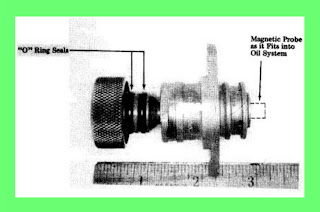Synopsis of Incident
Eastern Airways Flight 885 was an incident that occurred in the early 1980’s en-route from Miami International Airport to Nassau International Airport. The subject aircraft was a Lockheed L-1011 TriStar which on this occasion was carrying 10 crew and 162 passengers. During the flight a low oil pressure light illuminated for the number two engine. Upon shutting the number two engine down the decision was made by the flight crew to return to Miami. Whilst returning to Miami, number one and three engines low oil pressure lights also illuminated; number three engine then flamed out promptly followed by number one also flaming out. The flight crew attempted to restart number two engine; they did succeed in restarting the engine but not before the aircraft had dropped from 13,000ft to 4,000ft. Fortunately though the aircraft made a successful landing at Miami airport with no injuries reported.
Incident Causes
From a Nation Transportation Safety Board investigation into the incident it was determined that the active error that lead to the oil loss was due to the omission of all the O-ring seals on the master chip detector (MCD) assemblies leading to the loss of lubrication and damage to the airplane's three engines.

However the investigation also found other more systemic issues within Eastern Air as a result of the enquiry. In addition to the issue of the missing O rings it was further discovered that:
- mechanics failed to follow established and proper procedures for the installation of master chip detectors in the engine lubrication system
- supervisory personnel repeatedly failed to require mechanics to comply strictly with the prescribed installation procedures
- Eastern Air Lines management failed to assess adequately the significance of similar previous occurrences and to act effectively to institute corrective action.
Also, Federal Aviation Administration maintenance inspectors failed to assess the significance of the incidents involving master chip detectors and to take effective surveillance and enforcement measures to prevent the recurrence of the incidents.
History
This flight was not the first time that Eastern Air had experienced issues from MCDs. In the 20 months leading up to this incident they had 12 separate incidents involving both in flight engine shutdowns and unscheduled landings. Contained in the NTSB report was the following statement ‘In every incident … management investigated the circumstances and concluded that the problem was with the mechanics [engineers] and not with the maintenance procedure.’
Conclusion
There are a few human factors issues at play in this scenario. First of all the maintainers conducting the work failed to check that the MCDs they were fitting had O rings attached due to frequency that this maintenance action occurred at Eastern Air. Complacency in the task was the active error in this incident. Coupled with the maintainer complacency were the company norms, which led to the supervisors failing to ensure that the maintainers adhered to the prescribed installation procedures. Eastern Air management is also culpable in this case because rather than addressing the wider systemic issues such as poor procedures and undocumented norms they chose to instigate individual disciplinary action and training as a result. This incident has highlighted the potential for preventative maintenance to introduce risk, which becomes more pronounced in maintenance tasks which are undertaken very regularly, and how a single error could be transposed across multiple aircraft systems.
Reference
http://www.skybrary.aero/bookshelf/books/550.pdf pages 4 -6. Retrieved on 20 August 2010.
Links to learn more about this incident
http://www.answers.com/topic/eastern-air-lines-flight-885
http://en.wikipedia.org/wiki/Eastern_Air_Lines_Flight_885









